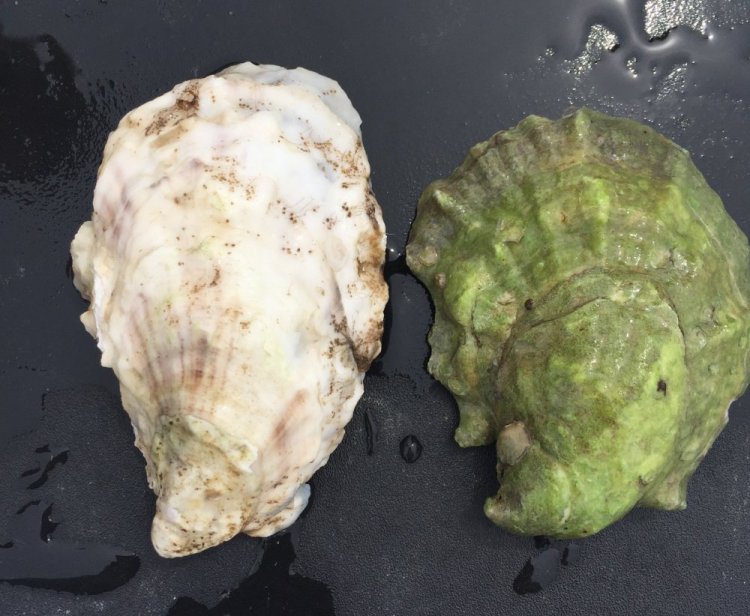SCARBOROUGH — It’s oyster tour season once again on my small farm, and I find myself talking about the concept of “merroir” a lot. Never mind the implied French accent, we should all be using the word!
Merroir conveys an important concept that not only helps us understand why oysters along the East Coast taste different from one place to another. It also makes us mindful of the sensitivity of marine life to seemingly minor changes in the ecosystem. As we turn to planting gardens, tending lawns and launching boats, we should all take heed.
With its root “mer,” the French for “sea,” merroir refers to the specificity of the marine environment in which an oyster is grown, and its impact on the oyster itself. The expression is borrowed from vintners who use “terroir” to refer to the impact of the land (“terre,” in French) in which grapes are grown on the taste of the wine. This explains why a chardonnay grape grown in the relatively cold, overcast and mineral soil of Burgundy produces a very different wine from a chardonnay grape grown in sunny California.
With few exceptions, oyster farmers on the Eastern Seaboard grow Crassostrea virginica, also referred to as the “Virginica,” “Eastern” and “American” oyster. These are direct descendants of the oysters shucked along the Damariscotta River thousands of years ago, and feasted on by early European settlers of what is now Manhattan.
What distinguishes a Pemaquid oyster from a Fisher Island oyster and an Apalachicola oyster – and they are, oh, so different – is the impact of the local environment. The merroir.
Even within the boundaries of my own small farm, the idea of “merroir” plays out in dramatic ways that even I have trouble getting my head around. The two oysters pictured above are the same species and from the same hatchery. But they grew at different depths in the water column: the oyster on the right on the riverbed, while the one on the left was suspended in gear. That small difference of just a few feet at low tide has an extraordinary impact on their color, texture and taste.
If a few feet in the water column make such a vivid difference, imagine the effect on merroir and our oysters when we start pouring fertilizer and pesticides into our environment, or dumping trash and human waste overboard from our boats!
Books like “American Catch” and “The Big Oyster” remind us how careless human waste disposal destroyed the massive oyster beds of New York Harbor at the turn of the century and turned our oyster-loving (and oyster-exporting) nation into a nation of Thai shrimp eaters (and importers).
Ironically, pollution killed off one of nature’s best pollution remedies. Filtering up to 50 gallons of water a day as they eat, oysters absorb toxins and excess algae, keeping the water clean and oxygen levels balanced for other marine life. They also prevent erosion and form barriers to storm surge. Oysters can truly help save the planet, if we let them.
Fortunately, oysters are being summoned back in reseeding and restoration projects aimed at cleaning up once-plentiful harbors like New York Harbor.
It’s easy to think of polluted waters as a New York problem, but miles of Maine’s coastline are also closed to shellfish harvesting because of fecal contamination.
We can make a difference. Both the Biddeford and Scarborough Shellfish Conservation Groups, entities that manage local clamming, have, with the support of state agencies, reopened waterways to shellfish harvesting simply by pinpointing leaky septic systems and outhouses and repairing them.
Each time this resulted not just in enhanced opportunities for shellfish harvesters to make a living, but also in cleaner water and less risk of excessive algae blooms, which can in extreme cases lead to dead zones barren of all sea life.
Nobody is too far from the ocean to be exempt: The Gulf of Maine watershed extends into Canada. So when you plant your garden, tend your yard or launch your boat this year, think of the oyster. Maine shellfish lovers present and future will thank you. And so will the sea itself.
Send questions/comments to the editors.



Comments are no longer available on this story